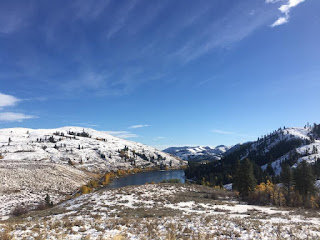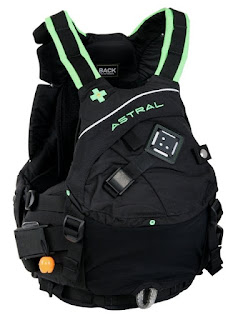Choosing A Sea Going Kayak
If you are just joining us for the discussion. You may want to read the previous post on "How To Buy A Sea Kayak"
Now you have your mind made up and want to have a kayak that can take you to the seas. Remember I call this the Sea Going Category. Here we are going to discuss a little more detail about the kayaks so that you can be equipped with a bit more knowledge when you arrive at the kayak shop or your kayak lessons.
As state in my last post. I feel taking lesson is the best place to start when looking to buy a kayak. This will allow you to gain skill and test a variety of kayaks.
First off the one thing that pops out at you are the different material kayaks are made of. Carbon/Kevlar, Plastic and Fiberglass. I will give you my opinion and remember that is all it is.
- Plastic: I think plastic kayaks are fine. I like them because they are durable and with proper care will last you a long time. They are not as rigid as other materials but still offer a great feel. Plus they tend to cost a bit less than other material. Not all plastic kayaks are manufactured the same, so you may want to ask what processed was used in making the kayak. If you are interested in more details on the differences, leave me a comment and I will get something together for you.
- Fiberglass: This is my preference. I have had good success with FB kayaks. They are rigid and provide a great kayak experience. Yes you can crack them and put holes in them. It does happen. But I have always been able to make repairs in the field and complete patches at home. Some will say they are lighter than plastic. I am not one to really look at weight too much.
- Carbon/Kevlar: I have to be honest I have never been a big fan. I also do not have much experience as an owner either. Really the only thing about them is they weigh less and since I am not one to dwell on the weight, then they do not really to much for me. They are pretty tough, but repairs are far more complicated than Fiberglass. But hey, they are easy to get on and off your car.
I would never encourage anyone to buy a kayak because it is easier to carry to the beach and get on my car. Kayak with a partner and they can help you carry the extra pound or two of weight. Carbon/Kevlar kayaks are very expensive, a bit too expensive for such little difference in weight. I enjoy being in a solid kayak. A kayak that can take a few bumps, bruises and occasional band-aid.
Hull Designs are an important factor to look at. Hard Chine, Rounded Chine and Multi-Chine kayak are all made to perform differently. The chine of the kayak will have some to do with the kayaks maneuverability, speed and stability. Stability is usually referred to as Primary and Secondary. Primary Stability is where the kayak finds a natural balance with very little edge applied to the kayak. Secondary is the stability that is at the more extreme of edging before a brace is needed to prevent capsize. I have found that it is a personal choice on what type of hull works. I enjoy the round chine kayaks, that is me. So what is all the chine business about?
- Hard Chine: Typical of this design are steep vertical sides with a shallow V bottom. Give the design the kayak on flat water tends to lead left or right with sitting in it. Some would say it has a low Primary Stability. But once you edge the kayak over there is a point where is holds its balance very well. This is the Secondary Stability. Hard Chine Kayaks tend to have great Secondary Stability. This will help you when turning the kayak. Given the steep sides the kayaks tend to track straight and swift. But turning then requires a bit more of an edge sometimes to overcome the pressure exerted on the side of the boat by the water. I have found that Hard Chine Kayaks do well in really choppy sea conditions with lots of wind. They perform just fine on flat water, they just have a tendency to feel a bit tippy sometimes.
- Multi-Chine: This is a design I have spent very little time messing with. It is a series of chines that work together to create what is said to be a stable kayak. With multiple chines it is suppose to find a nice edge at various levels of edging. I do not encounter the hull design very often. So my comments are shot.
- Round Chine: This has been my choice for my kayaks. I find that the Primary Stability is usually strong and in most cases the Secondary Stability is good, but I feel predictable. Meaning I can typically feel the transition from Primary to a Secondary to almost capsize. When I developed that sensation I became comfortable with this design because I felt I had good feed back from the kayak. Edging is still require of turning and turns well on a Primary edge and as you push to Secondary you get a more exaggerated effect. The design performs well in flat and rough sea conditions. Looking the side of the kayak you see a gentle transition (rounded) from the side to the bottom of the kayak.
Ask your instructor if you are not sure what type of hull design you are in. It is very important to note.
Next I would like to mention Rocker. This is the curvature of the kayak from front to back (bow to stern). This has a varied effect on the kayaks performance. Increased rocker tends to add maneuverability to the kayak. Though with lots of rocker you see the up swept bows. When paddling, as you move the kayak through the water. Pressure builds at the bow, water piles up. This can hinder the kayaks speed. Sometimes with an increased up swept bow, the kayak may weather cock (turn in to the wind) easier or in light winds. With less rocker you decrease the maneuverability of the kayak but increase its ability to glide straight. So more edging is required to turn the kayak. You tend to see a less up swept bow and weather cocking is less.
I tend to see less rocker on hard chine kayaks and more rocker on round chine. This not always the case, but it does seem to be pretty common. It is best to test kayak with minimal and increased rocker to develop a feel for what is going on.
The top deck of a kayak is debatable. I always look for safety lines (deck lines) that run the perimeter of the kayak. I like to see how they are connected and if they can handle weight. Deck lines are there for a reason. They need to be strong and fit so that one can get their fingers under them. I also look for bow and stern surf toggles. These are not carry handles. They are used for maintaining contact with your kayak if you come out of your boat in surf or rough conditions. The toggles should have enough line so that if the kayaks starts roll, it does not pin your hand against the deck breaking your fingers. Now for the kind of debatable part. The back deck of the kayak. Just behind the cockpit. Some kayaks have a really low back deck. This was a design feature for safety. With a low back deck you can more easily mount the deck to perform a self rescue. Some kayaks will not have this. Just be aware that certain types of rescues may take more technique and practice with a higher back deck.
All Sea Going Kayaks should have two bulkheads. This creates air tight compartments in the bow and stern. This provides flotation if you swamp your cockpit. Bow and stern hatches should be water tight. My favorite are the round rubber hatches. Day Hatches are found on most kayaks today, but not all. I find it is a useful place to keep water and emergency equipment.
My view on rudders. Take a class and learn to paddle without one. Get a skeg style kayak and leave the rudder kayak alone. If you want more details why, please let a comment and I will put something up.
I know there is a lot of information here and I hope it gives you some terminology you can research and gain more knowledge on. In the end I hope it helps you find a kayak that is best fit for you and your needs.
Kayaks become our partners out there. You rely on it in rough water, explore nature and enjoy journeys together. So make sure you find that kayak you want as your partner.
Here are a few links to education in my region:
Discovery Sea Kayaks on San Juan Island Wa
Body Boat Blade on Orcas Island Wa
Sea Kayak Shop Anacortes Wa
Columbia River Kayaking Southern Washington
Alder Creek Portland Or



Comments
I've sort of wondered why people might feel the need for rudders, since you can turn the boat by leaning.
If you ever post about rudders vs skegs, I'd love to read it.
Also, padding out a cockpit would be cool to read about, too.
I do both white water and sea kayaking and prefer my boats to fit like a prosthesis. LOL